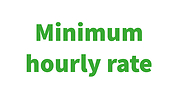Go to main menu | Go to submenu | Skip to content
A lower risk of poverty or social exclusion, in particular among children
17-10-2018
The Poles are better off – this fact is confirmed both by the statistics (inter alia: Central Statistical Office of Poland (GUS), Eurostat) and international rankings. In 2016, nearly 6.5 million persons were still at risk of relative poverty in Poland. Their number decreased by 872 thousand a year after. The situation of children has improved significantly. The number of those benefiting from social aid has decreased as well.
The risk of poverty and social exclusion is diminishing
The EU-SILC survey of 2017, the results of which have just been published by EUROSTAT, demonstrates that in the years 2016-2017 Poland recorded a visible reduction in the at risk of poverty rate (AROP) for the first time in 9 years. In the years 2008-2016, it fluctuated around 17%, falling down to 15.0% in 2017 (a decrease by 2.3 pp). In 2017, there were 5.61 persons at risk of relative poverty in Poland – as many as 872 thousand less than a year before.
A lower number of persons is also affected by severe material deprivation (SMD). SMD refers to a situation of inability to satisfy at least 4 of 9 needs for financial reasons, including: possessing a television set, a car, a washing machine, a telephone, paying bills on a timely basis, keeping one’s home adequately warm, going on a one-week holiday once a year, consuming meat, fish (or vegetarian equivalents) every two days, or paying an unexpected expenditure. In 2017, the severe material deprivation rate was as high as 5.9% in Poland, if compared with 6.7% in 2016 and 8.1% a year before.
The very low work intensity indicator is on a gradual increase (VLWI). Every ten citizens of the EU experience very low work intensity (9.3%) on average. In 2017, the indicator was around 5.7% in Poland and was lower by 0.7 pp than a year before.
In 2017, the at risk of poverty or social exclusion indicator (AROPE) reached 19.5% in Poland and remained below the EU average for another year in a row. As recorded by Eurostat, the lowest values of this indicator were recorded by Bulgaria, Romania and Greece in 2017 (over 30%). The Czech Republic, Finland, Slovakia, Holland, Slovenia and France were placed at the other extreme (below 18%).
If compared with 2008, this indicator has decreased by 11 pp in Poland, thus recording the greatest decrease across the whole EU.Poland was followed by Romania (-8.5 pp), Latvia (-6 pp) and Bulgaria (-5.9 pp). Despite the improved economic situation, many countries (inter alia: Greece, Italy or Spain) have recorded an increase in 2017 against the base year of 2008.
The absolute number of persons at risk of poverty or social exclusion amounted to 7.27 million in 2017 in Poland and was lower by nearly 950 thousand than in 2016 and lower by as many as 4.22 million persons than in 2008.
Calculated by Eurostat, the at risk of poverty or social exclusion indicator combines data of three sub-indicators: the at risk of relative poverty indicator including social transfers as income, the indicator of severe material deprivation and the indicator of very low work intensity in a household. Individuals are counted only once, even if affected by more than one form of exclusion. This indicator is monitored under the Europe 2020 Strategy.





